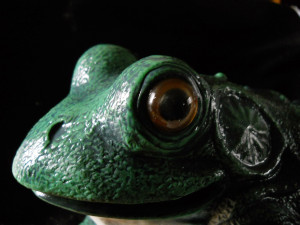 Do you see what I see?
Do you see what I see?
Did you know that frogs can see much farther than us? Much, much farther.
In British physicist David Deutsch’s 1997 book Fabric of Reality, he discusses the electric torch (flashlight) experiment, where an experimenter gradually backs away from the torch, the light from it becoming fainter and fainter, then he says:
Can light really be spread more and more thinly without limit? The answer is no. At a distance of approximately ten thousand kilometres from the torch, its light would be too faint to detect and the observer would see nothing.
Then he adds:
That is, a human observer would see nothing; …… Frog’s eyes are several times more sensitive than human eyes. …… If the observer were a frog, and it kept moving ever farther away from the torch, the moment at which it would entirely lose sight of the torch would never come. Instead, the frog would begin to see the torch flicker. The flickers would come at irregular intervals that would become longer. …… At a distance of one hundred million kilometres from the torch the frog would see on average only one flicker of light per day, but that flicker would be as bright as any. [p.35 in the Penguin edition]
One flicker of light per day. What is that flicker made of? One photon. “Frogs can see individual photons,” Deutsch explains.
So when frogs look at the night sky, they see more than we do, and they see farther than we do. That means they also see farther back into the past, maybe to the early universe.
How about that?
Share this:





